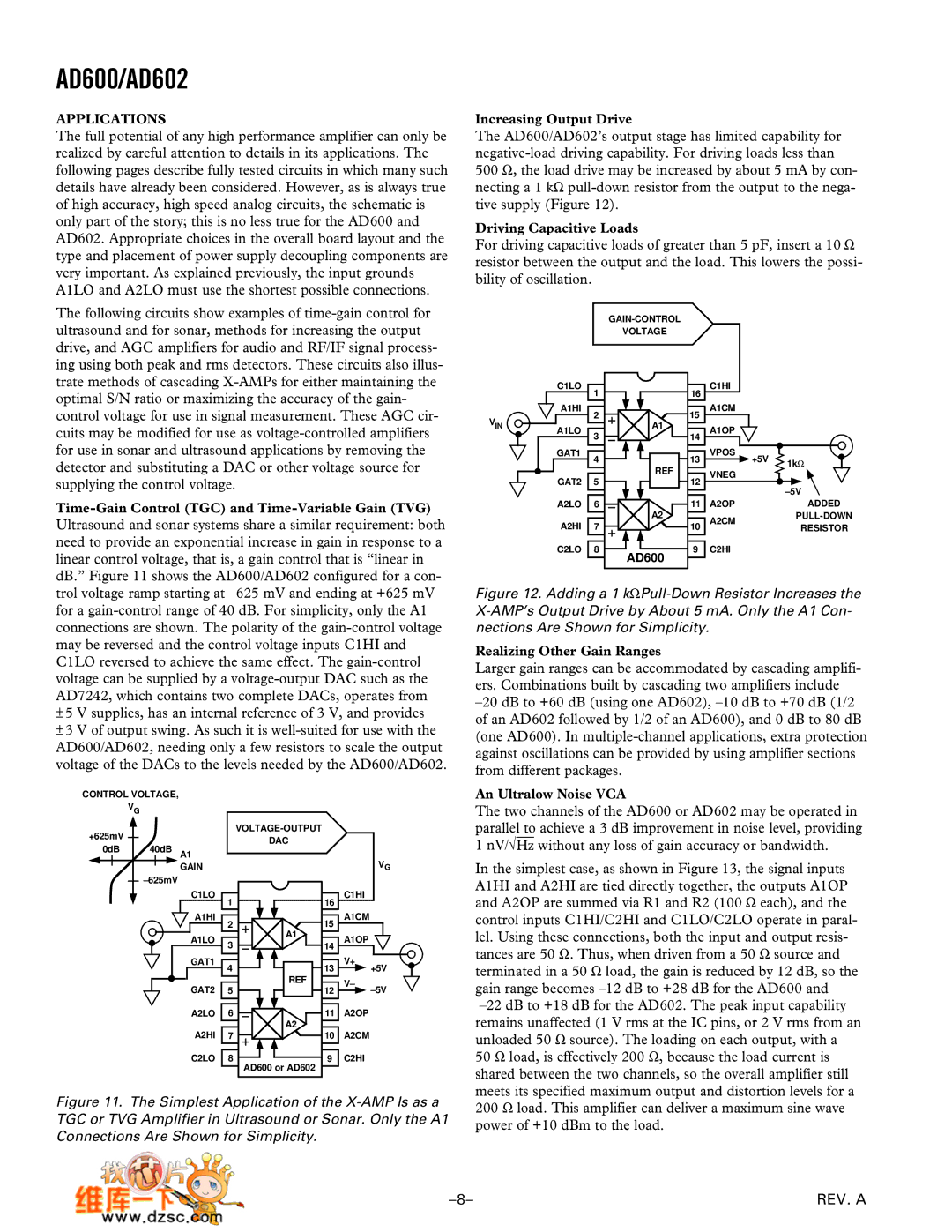AD600, AD602 specifications
Analog Devices, a leader in high-performance signal processing, offers the AD602 and AD600, two versatile RF amplifiers known for their impressive performance in a variety of applications. The AD602 is a dual-channel, low-noise variable gain amplifier (VGA), while the AD600 is a similar VGA but designed for single-channel applications. Both devices are highly regarded in the fields of communications, instrumentation, and imaging, as they provide outstanding performance in amplifying weak signals.The AD602 features a gain range of -6 dB to +40 dB, allowing for precise control of the output signal strength. This flexibility makes it well-suited for applications such as IF amplification, where signal levels can vary significantly. The device also includes a low distortion characteristic, enabling it to maintain signal integrity even when handling larger input signals. With a wide bandwidth spanning from DC to 100 MHz, the AD602 caters to applications requiring both low-frequency and high-frequency performance.
On the other hand, the AD600 shares many similarities with the AD602 but offers slightly different characteristics. With a gain range of -1.5 dB to +40 dB, it offers a broader range of control for its output signal strength. Like the AD602, its low distortion and high linearity are crucial for high-fidelity signal processing. The AD600 is also capable of delivering a high output current, making it favorable for driving capacitive loads effectively.
Both devices employ Analog Devices' proprietary topology that minimizes the effects of thermal drift and achieves high levels of performance under varying conditions. They are built with advanced manufacturing processes that ensure stability and reliability in industrial applications. Integrated with differential inputs, these devices help eliminate common-mode noise, thus improving overall signal quality.
The AD602 and AD600 are equipped with comprehensive protection features, enabling them to withstand overload conditions without compromising performance. Their low noise figure contributes to excellent low-level signal recovery, making these amplifiers ideal for radar receivers, medical imaging systems, and satellite communication.
In summary, the AD602 and AD600 by Analog Devices stand out as powerful, reliable variable gain amplifiers with robust performance characteristics. Their flexibility in gain control, low distortion, high linearity, and advanced protection features make them invaluable components in modern electronic systems, enhancing the quality and reliability of signal processing applications across various industries.

